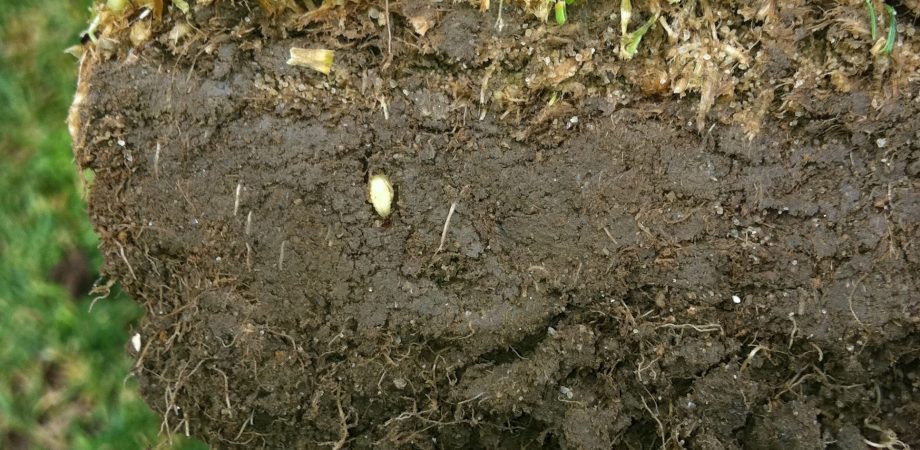Be Ready For The Annual Bluegrass Weevil

Annual bluegrass weevil (ABW) damage, a yellowing or browning of the affected plant, can happen very fast, almost overnight in most cases. People who have never dealt with ABW can often misdiagnose its symptoms as wilt stress or even anthracnose. ABW damage is mostly caused by the larvae, but the damage starts when the adult lays her eggs in the sheath of the plant. The larvae will then begin feeding on the stems and crown of the plant, causing the most damage.
ABW damage shows up mainly on effected Poa annua grass on the perimeter of putting greens, tees and fairways. An initial area to look for an ABW infestation is along a woodline. While ABW infestations do not always begin here, this is a good indicator of an ABW problem. On greens, the damage shows up first on the collar outside of the green, and on tees and fairways along the cleanup pass of mowed area. ABW are not only affecting Poa annua, they are also affecting bentgrass or close mowed perennial ryegrass.
Diagnosis
A simple way of diagnosing an ABW problem is to cut out a sample of the soil profile and look for small white larvae, which will be near the crown of the plant where the soil begins. They are about the size of a grain of rice, but easy to see once you know what you are looking for.
Treatment
Excellent results can be achieved by applying an Aloft (Nufarm) preventative program. A typical year working with this program involves applying Aloft at 5 oz/acre on May 15, July 1, and August 1. These applications work well disrupting the life cycle of the ABW and preventing issues throughout the year. MatchPoint from DowAgroSciences is also labeled for control of ABW at 16-18 oz/acre rate and gives similar results as Aloft.
Using a penetrant, like Hydro-Pak Command, with an ABW application will help improve the ABW application performance. Command reduces soil surface tension and improves water infiltration, allowing water and nutrients to reach the root zone. Command also allows water to move through heavy organic layers alleviating oxygen-deprived soils. Note: do not push the product past where the insect or larvae is located and or overwater.







